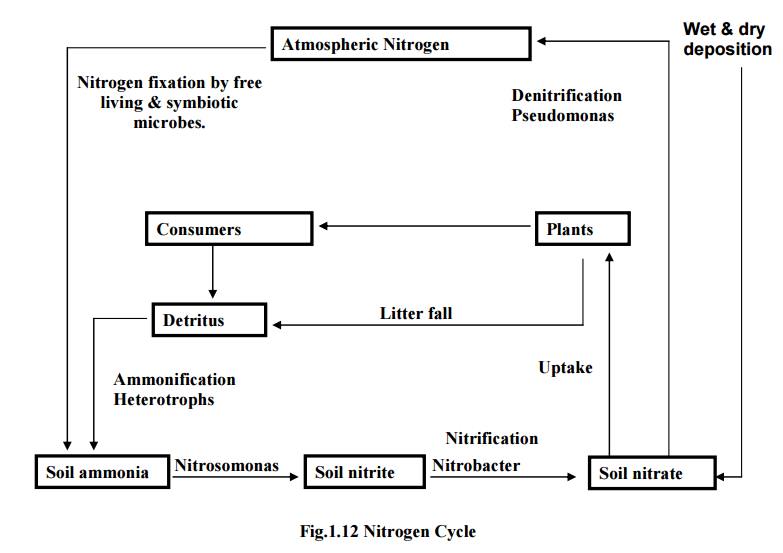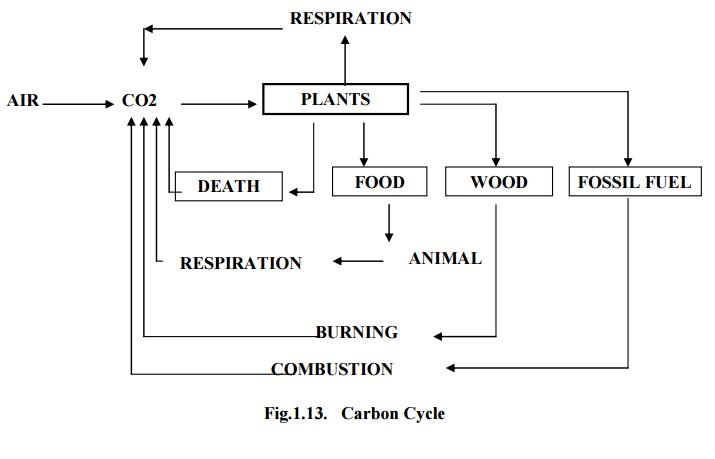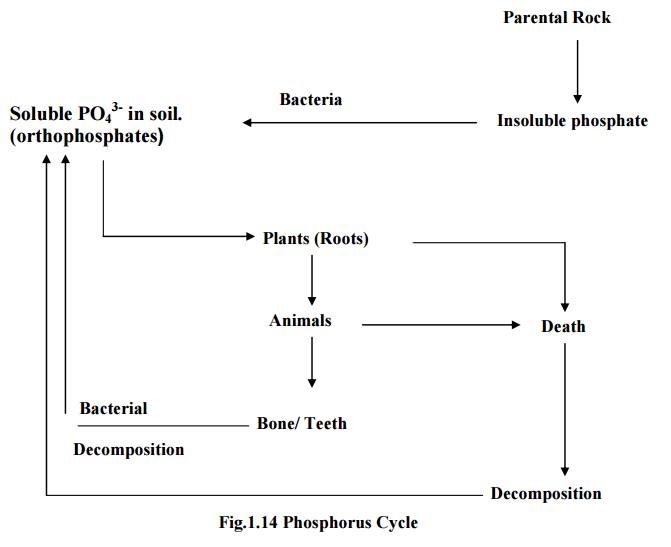Chapter:
Nutrient cycles: Carbon, Nitrogen and phosphorus cycle
NUTRIENT CYCLES
v Nutrient
cycles involve storage and transfer of nutrients through different components
of the ecosystem, so that the nutrients are repeadly used.
v The
cyclic movements of chemical elements of the biosphere between the organisms
and environment are referred as “BIOGEOCHEMICAL
CYCLES”
Gaseous
cycle: Those elements in which the reservoir is the air or the oceans (via
evaporation). Gaseous cycles include those of Carbon, Nitrogen, Oxygen, Carbon,
and Water.
Sedimentary
cycle: Those elements which are received from the Earth’s crust. Sedimentary
cycles include those of iron, calcium, phosphorus, and other more earth bound
elements.
1 NITROGEN CYCLE
v Nitrogen
is crucial for all organisms
v Nucleic
acids
v Proteins
v Chlorophyll
v Nitrogen-
78% in Atmosphere
v N2 is
very stable and must be broken apart by organisms, combined with other atoms
into a usable form.
v Nitogen
cycle completes in 5 steps:
1) Nitrogen Fixation
Conversion
of N2 → NH3
v Combustion,
volcanic action, Lightning, Industrial processes (making fertilizer). Bacteria
(Azotobactor, Clostridium, Nostoc etc.)
2) Nitrification
Conversion
of NH3 → NO3
Soil
bacteria convert in a two step process.
3) Assimilation
Roots
absorb NH3, NH4, or NO3 and incorporate them
into nucleic acids and protein.
4) Ammonification
Amino
acids and nucleotides are broken down into waste products NH3 or NH4
5) Denitrification
The
reduction of NO3 to N2 .Denitrifying bacteria return some
of the nitrogen to the atmosphere

2 CARBON CYCLE
v Carbon
enters plants, etc., as CO2
§ Bacteria
process carbon in a fashion that allows it to be recycled.
§ Obtain
energy from the molecules, and convert carbohydrates to carbon dioxide as a
result of respiration.
v Photosynthesis
removes carbon from the abiotic environment (fixes carbon into organic
molecules)
v Carbon
moves through food chain through consumption of one organisms by another
v Cellular
respiration, combustion, and erosion of limestone return carbon to the
atmosphere, water and abiotic environment.

The
source of atmospheric carbon dioxide is variable but only plants can utilize
atmospheric carbon directly
3 PHOSPHOROUS CYCLE
v The only
cycle that does not have a gaseous state
v Inorganic
phosphate PO43- is
released from rocks and sediments through the action of erosion.
v Soil PO43- is absorbed by plants and incorporated into
nucleic acids, phospholipids and ATP.
v Animals
obtain most of their PO43- by consumption of other
animals and from water.
v PO43-
is released to the soil again by decomposers.
•
Dissolved PO43- gets absorbed
by algae and aquatic plants
•
Decomposers break down waste and returns PO43-
to sediments on the seabed.
•
Some returns to terrestrial environment through
geologic processes and via seabirds. Guano
